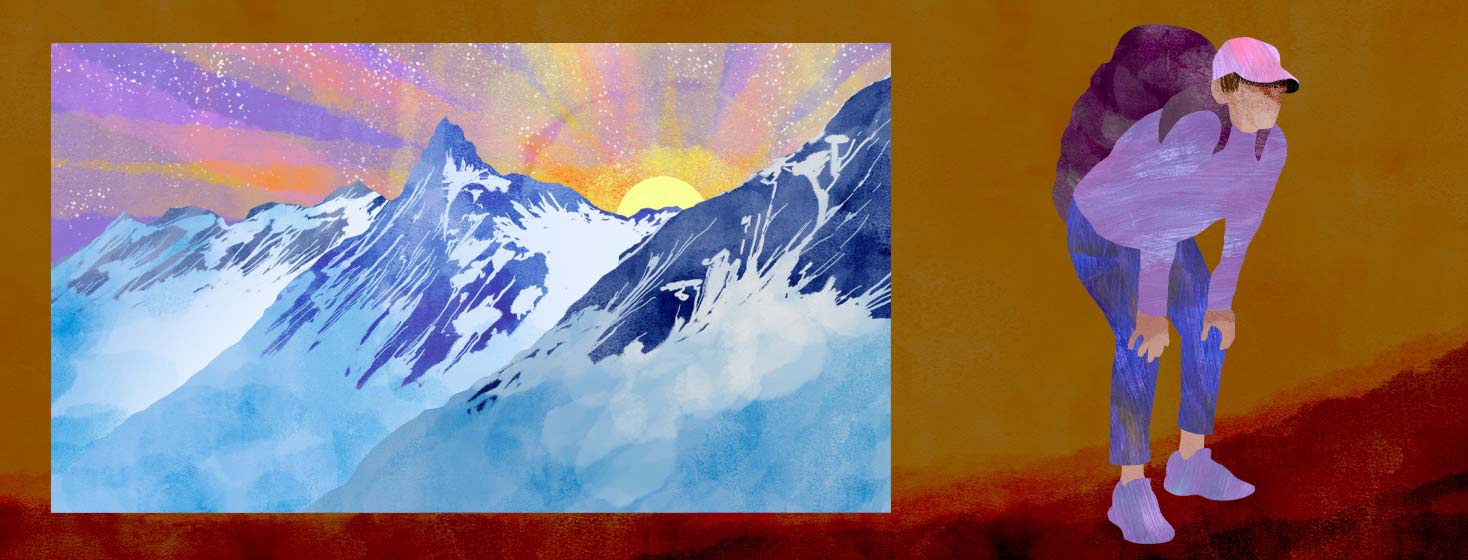High Altitude Effects on the Body When You Have MG
My husband and I love Colorado! When we lived in Greeley and Westminster, we would take many day trips into the Rocky Mountains, going west on I-70 or north of Denver to Estes Park and Rocky Mountain National Park. Both areas have a lot of fun offerings, regardless the season.
We took 2 of our grandchildren with us for the summer one year when we lived there. We went high in the mountains, above the tree line, where the air is very thin. This was the year before my myasthenia gravis (MG) diagnosis.
We had stopped for a while to take photos. This happened to be the year the Park Service tried an experiment with the tundra. You could actually walk on the boardwalk provided to the snow field and play. After that, we went west over the divide. I had no issues, though we were well above 11,000 feet. We moved back to the south after that trip.
Altitude sickness
Five years after taking the grandchildren to Colorado, I returned for a meeting. We invited 2 other grandchildren along to show them the mountains and spend time with them. Once my meetings were over, we made a trip back to Rocky Mountain National Park. This time, we took an unpaved road and spent more time climbing to the high elevation by vehicle. Once we got to the top, there was a gift shop. We were inside enjoying looking at souvenirs when all of us started becoming ill.
I had never before experienced altitude sickness. It hit us hard, especially me (I was already in a power chair by now.) While the others were nursing a headache, nausea, and fatigue, I was feeling very faint, dizzy, and had moderate to severe breathing difficulties. Once I realized what was going on, we quickly finished our shopping and left for a lower elevation.
When we got to about 10,000 feet, they started feeling better, but my shortness of breath was still alive and well. Though it had improved slightly, it was still bothering me considerably. Once we arrived at 8,000 feet or lower, I started feeling much better and they were over it.
A shock to the system
Living in an area with an elevation of around 730 feet above sea level and going to an elevation above 11,000 to 12,000 feet is quite a shock to the system. Even Denver, known as the mile high city, can cause shortness of breath to those not used to that elevation.
When we first moved there, just walking from my vehicle, into the office building, and to my desk on the third floor caused me a great deal of shortness of breath. So, going up another 6,000 feet or more was almost devastating to my system - and this time, I was no longer walking!
Symptoms of altitude sickness
Symptoms of altitude sickness to watch for include:1
- Nausea
- Vomiting
- Fatigue
- Loss of energy
- Headaches
- Loss of appetite
- Shortness of breath
If you experience any of these symptoms, you should not go any higher and rest. If you have pre-existing conditions, such as a lung or heart condition, discuss this activity with your doctor and neurologist prior to going.1
Altitude sickness could prove fatal to those that do not heed the warning signs or have those pre-existing conditions. This is something I never thought about happening, since I’d never had any serious issues with it before.1
Advice for MG
Should you experience altitude sickness, the paperwork we got when we entered the park indicated we should descend in altitude to around 8,000 feet. If you are having serious symptoms you should seek medical attention immediately!
The park literature we received also indicated we should allow several days to acclimate to the higher altitude. So, my advice to anyone with MG traveling to high altitudes, is to take the time to acclimate yourself to altitude change gradually and allow the time for your body to adjust before progressing straight up the mountain.
Most importantly, talk to your doctor about your plans before you go and have a plan of what to do for different scenarios!

Join the conversation